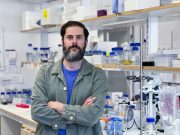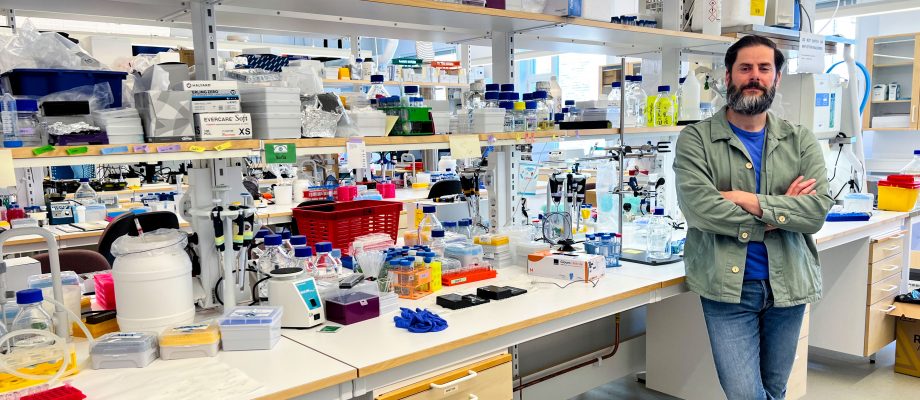GRANTS. The EU is investing the equivalent of just over SEK 32 million in recruiting ten doctoral students to various European research groups studying how epithelial cells build up contact surfaces in different organs that handle bacteria. One of these doctoral students will undergo research training in Thaher Pelaseyed’s group at the Institute of Biomedicine.
The EU’s Marie Skłodowska-Curie Actions Doctoral Networks program has awarded an EUR 2.8 million grant to train ten doctoral students. The initiative is coordinated by Mike Boxem, Professor of Cellular and Systems Developmental Biology at Utrecht University in the Netherlands. Besides Sweden and the Netherlands, groups in France, Portugal, Spain, and the UK are also part of the doctoral network. The Swedish cluster of the network includes Pelaseyed’s lab in University of Gothenburg and researchers in Uppsala University. The doctoral students recruited to the initiative will be based with one of the groups, but will also visit other research groups within the network as well as industrial biotech partners to facilitate learning and knowledge sharing.
The network aims to understand how epithelial cells, for example those in the gut, organize themselves to absorb vital nutrients while also keeping out harmful microorganisms such as bacteria. The research models range from fruit flies to mice, human tissue samples and ‘miniguts’ cultivated from isolated human and mouse stem cells.

“Many of the groups are working primarily on simple cellular models,” says Thaher Pelaseyed, Assistant Professor in the Department of Medicinal Biochemistry and Cell Biology. “My group contributes with unique animal models and intestinal tissue from patients to create a clearer clinical link to common diseases such as intestinal infections and chronic inflammatory bowel disease (IBD). These diseases are triggered by bacteria coming into direct contact with the epithelial cells of the gut, but the underlying causes and susceptibilities are completely unknown.”
Many questions but few researchers

Thaher is one of the research leaders within the Mucin Biology Groups, which conducts internationally recognized research on the protective layer of mucins in the large intestine and the airways. However, this well-organized protective mucus layer is not present in the small intestine. Many questions remain about how protection in the small intestine works, and the EU investment will create a new generation of scientists who can address the critical knowledge gap.
Thaher shows an electron microscope image taken by his postdoc student Elena Layunta in partnership with the Center for Cellular Imaging. The image shows microvilli, the finger-like structures that make up the part of the gut cell in direct contact with the contents of the gut, including bacteria. Microvilli are covered with a dense layer of glycocalyx, which is produced to protect the small intestine against the bacteria that can be seen as round balls in the image. The small intestine’s glycocalyx consists of long bottle brush-shaped mucins that are anchored to the surface of the cells.

“Several exciting projects will be carried out within the research network,” explains Thaher. “These involve everything from how individual proteins help maintain the microvilli and the structural integrity of the glycocalyx to how bacteria behave in the absence of this protective layer.”
Artificial gut
The academic research groups have also joined forces with biotech companies working with new artificial research systems, including a model of the gut that could provide brand new opportunities to study the protection in the small intestine. The research field is currently limited by the difficulty of obtaining tissue samples from patients. These biopsies can then only be studied alive for about an hour.
“If we can make good progress toward creating a good artificial system with human cells and artificial mucus that resembles the native mucus in our bodies, this would provide better conditions for studying the interactions between epithelial cells and bacteria,” adds Thaher. “However, this is a complex biochemical environment to recreate, and creating a perfect artificial gut is a challenge.”
BY: ELIN LINDSTRÖM











